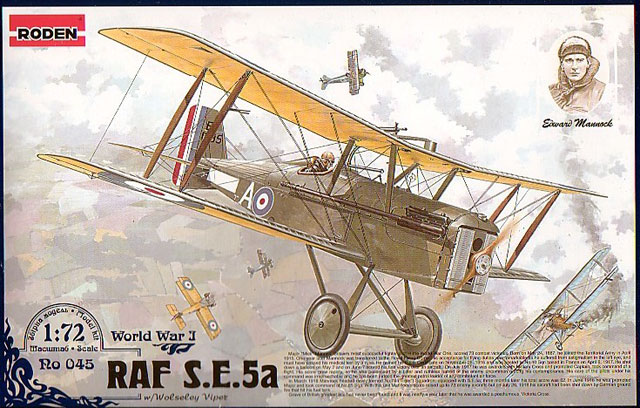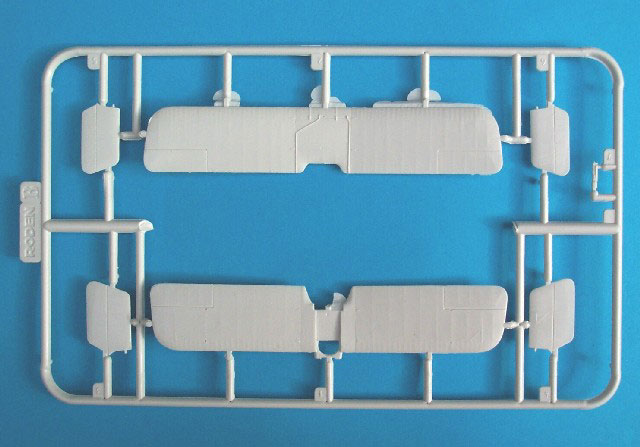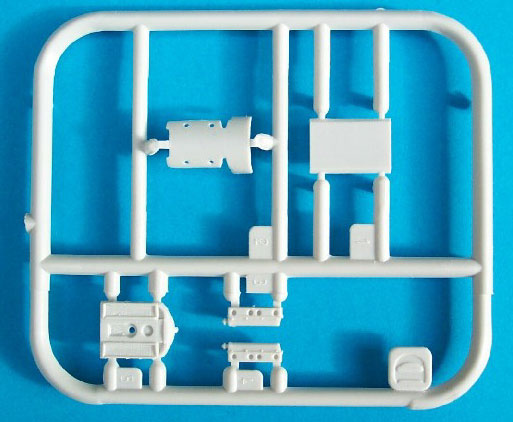|
RAF S.E.5a

Roden 1/72
S
u m m a r y
|
| Catalogue Number: |
Kit No. 045 - RAF S.E.5a |
| Scale: |
1/72 |
| Contents and Media: |
See text below |
| Price: |
USD$8.97 from Squadron.com
|
| Review Type: |
FirstLook |
| Advantages: |
Good research, accurate; fine
detail, delicate wings. |
| Disadvantages: |
Fit of cockpit section tricky, decal
sheet out of register. |
| Recommendation: |
Recommended |
Reviewed by Robert Baumgartner

Roden's 1/72 scale
S.E.5a is available online from Squadron.com
After a tremendous run with subjects from the Central Powers, Roden are
turning their attention toward aircraft flown by the Allies.
This is the first of a series of releases in the SE5a range. The usual
attractive box top contains three sprues in the familiar light grey
plastic. As well as the decal sheet, there is a surprise with a most
welcome acetate sheet printed with variously shaped windscreens. Major
outlines of all parts compare favorably with plans in both the Albatros
Productions Datafile on the SE5a and the SE5a Special. Be careful when you
overlay the parts because reproduction of the plans in my two editions was
not printed in the correct scale.
Sprue B contains the wings, and tail planes which all reveal Roden‘s
expertise in providing fine trailing edges. Ribs are beautifully
restrained and fully formed. The modelers task is made easier by the one
piece wings with their built in dihedral. Surprisingly the lower wing on
my example was slightly bowed which resulted in a lot less dihedral than
there should be. Close inspection showed this to be to be a result of the
cooling plastic and not a design error. A dip and bend in hot water will
rectify this.

This sprue also contains the short cord elevators, which was seen on
some SE5as.
The parts applicable to the Wolseley Viper installation are found on sprue
D. As with the rest of the kit, these are well molded, accurate and
contain good detail.

The cockpit is made up of the usual basic items such as seat, rudder bar,
control column, instrument panel and shelf. Plenty of scope is available
for those with extra detailing tendencies.
A busy sprue A contains everything else that will be required for this
SE5a version. As well as the fuselage halves, three styles of top deck are
supplied, two types of propeller, and both the steel and later wooden
undercarriage legs. There is even a row of 4 x 25lb Cooper bombs.
A dry fit of the main components reveals a tricky job to fit the separate
cockpit/top deck section. Like the engine cowling of the earlier Albatros
kits, extra time spent here will reward. The lower wing fits into a cut
out in the fuselage and a little trimming here results in a perfect fit
with the airfoil shape.
Modelers will be left to make their own control horns, as these are too
delicate on the SE5a for even Roden to mold onto the wings. Indentations
are present to show correct placement.
Four aircraft are represented on a decal sheet that dislays good
definition. The sheet in my example was out of register, which fortunately
only affects the roundels. A novel idea by Roden is to represent the
inspection windows and pulleys located on the wings with decals.
I) SE5a D6856 flown by Capt. A W
Beauchamp-Proctor of 84 Sqn. RAF, 1918.
Being only 5’ 1”, Proctor had to have special adjustments made to his
seat and the rudder bar of his SE5a. Alex Revell’s book “Victoria Cross –
WWI Airmen and their Aircraft” illustrate this machine as having blue
wheel covers with a white disc (denoting C flight). Proctor won a Victoria
Cross and while flying this machine, scored 16 victories including 6
balloons.
II) SE5a F5910 “A” flown by Lt. W. G. Claxton of 41 Sqn. RAF, 1918
Claxton scored a total of 37 victories including 7 in F5910. It wasn’t
long before the nickname “Dozy” was given to him for his calmness under
fire. He frequently brought his aircraft back to base full of holes. On
17th August, a German surgeon saved Claxton’s life by performing cranial
surgery after the pilot was shot down behind enemy lines.
III) SE5a E1295 “A” flown by Major Edward Mannock of 74 (sic) Sqn., 1918
“Above the Trenches” by Shores Franks, and Guest, list Mannock using
this machine with 85 Sqn., after having transferred there to be the CO on
18 June. Mannock scored his last eight victories in E1295 between 7 July
and 26 July 1918.
IV) SE5a C1904 “Z” flown by Billy Bishop of 85 Sqn., 1918.
Bishop scored a total of 72 victories (no, I won’t touch that topic
with a 40 foot pole!) with C1904 being used to score the last 13.
Ironically Bishop joined with another controversial Victoria Cross winner
Billy Barker, to form a commercial aviation venture.
After serving as an Air Marshall in WWII, Bishop died on the 11
September 1956.
Roden is off to a great start with this new family of SE5as.
If care is taken during assembly, the cockpit/decking section will not
pose too big a problem. Hopefully the decal registration problem I had was
an isolated case. Good research has meant that we now have an accurate kit
of a very important aircraft, with more in the family to come.
Recommended
Thanks to
Squadron.com for the review
sample.
Review and Images Copyright © 2003 by
Robert Baumgartner
Page Created 12 February, 2003
Last updated 12 August, 2004
Back to HyperScale Main Page
Back to Reviews Page
|
Home | What's
New | Features
| Gallery |
Reviews | Reference
| Forum
| Search